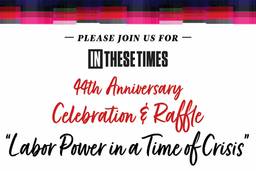If the Democratic Party Won’t Take Risks, It’s Up to Us
Now is not the time to play it safe.
Christopher Hass

I think we should march.” That’s the message a grandmother in Hawaii, with no prior professional experience in politics or activism, shared with 40 or so of her friends on Facebook the day after the election. Two months later, the Women’s March on Washington had snowballed into the largest demonstration in U.S. history.
It’s no accident that the first major act of resistance to the Trump administration didn’t originate with any party or institution. Rather, it reflects just how wholly unprepared most D.C. organizations were for this political moment.
In 2009, at the height of the healthcare reform fight, grassroots activists repeatedly pushed to organize a march on Washington as a public show of force, only to be stymied again and again by the Beltway leadership calling the shots. The concerns then would be familiar to anyone who followed the handwringing in the run-up to the Women’s March: What if it gets out of control? What if it sends the wrong message? What if no one shows up?
That type of thinking hasn’t held back the launch of a wave of new organizations and actions to resist the Trump administration. At last count, nearly 100 of these efforts have sprung up in the past two months — including groups focused on pressuring lawmakers (Indivisible — see page 8), connecting people to their nearest competitive House race (Flippable, SwingLeft and SisterDistrict), and recruiting a new generation of progressive candidates (Our Revolution, Brand New Congress and Run for Something — the latter of which identified 2,000 potential candidates in its first nine days).
These are the types of efforts that both the Democratic Party and well funded advocacy groups should have been leading all along. Over the past decade, party committees like the Democratic Congressional Campaign Committee have built a ruthlessly efficient fundraising system, but little else. Meanwhile, virtually every liberal advocacy group in Washington was caught flat-footed on November 8, when their well-laid plans went up in smoke along with the Clinton presidency.
The loss of the presidency, and the absence of any clear leader to rally around, didn’t create an organizing vacuum on the Left — it revealed one. Now it’s up to the party, as well as progressive organizations, to learn from these newly engaged activists— many of whom are also their members— or be left behind. That means tossing aside slow-moving and risk averse institutional cultures, because in today’s environment:
• People are ready to do meaningful work, now. We don’t need an offer of symbolic action when there is real action to be taken.
• Things move fast. If it takes an organization more than 30 minutes to decide whether to support an action, it’s time to streamline the decision-making process.
• We’re all in this together. If you’re not willing to partner with organizations and people whose message or means you may disagree with at times, we’re all going to lose.
Some groups are already adapting to the new reality. The Greenpeace banner drop at the White House on January 25 was a risky but courageous act of resistance. Even MoveOn.org has begun to focus on moving supporters offline and into the streets.
As for the rest of us, now is not the time to wait for orders. Our leaders are gone, and it is glorious. Let’s march.
Christopher Hass was Executive Publisher of In These Times from 2016 through 2021, and interim Publisher in 2022. Before joining ITT, he spent eight years working on political and advocacy campaigns, including both the 2008 and 2012 Barack Obama presidential campaigns. He is also the former editor and publisher of P8NT Magazine.









